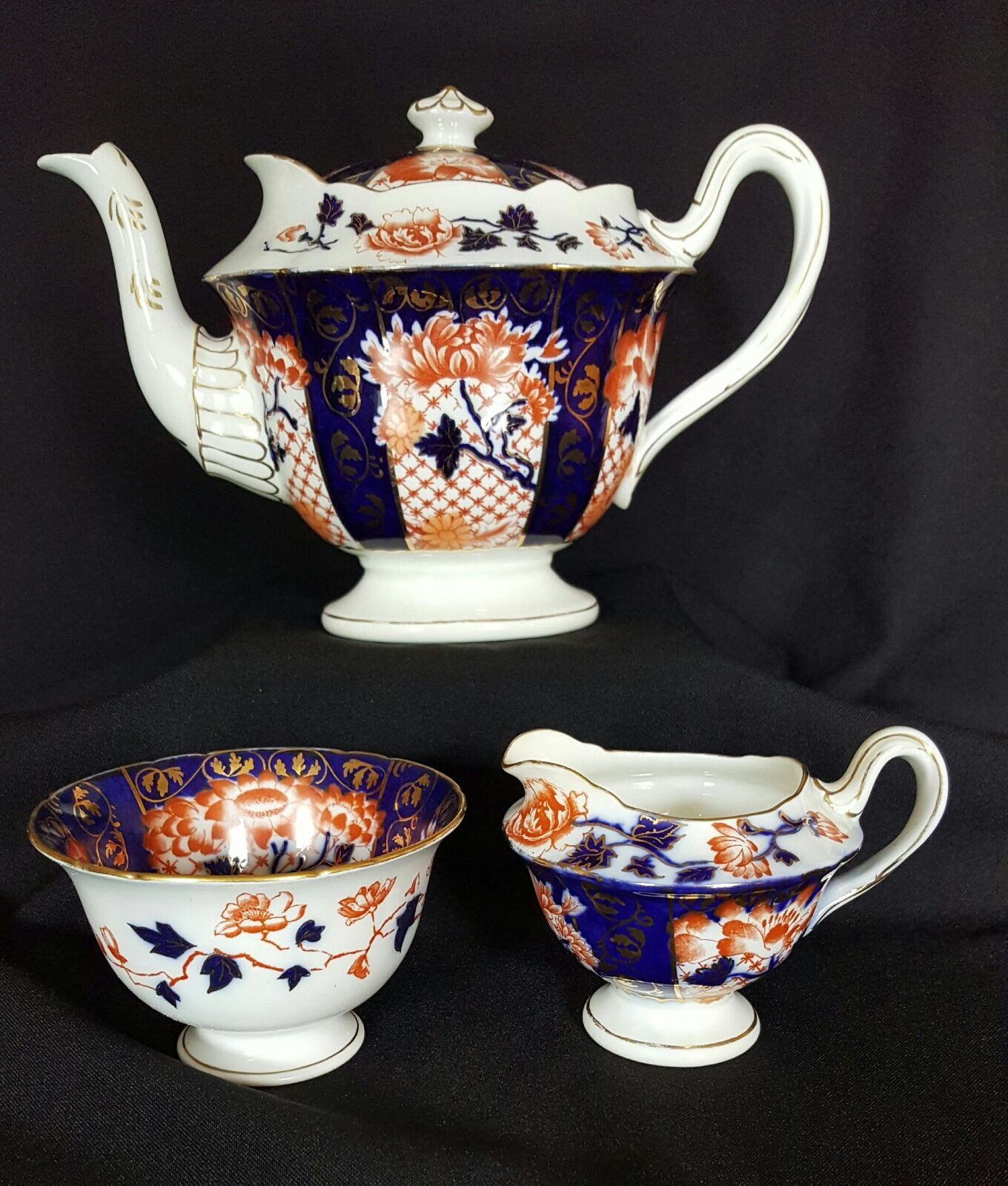Wileman and Shelley Japan Ware
Table of Contents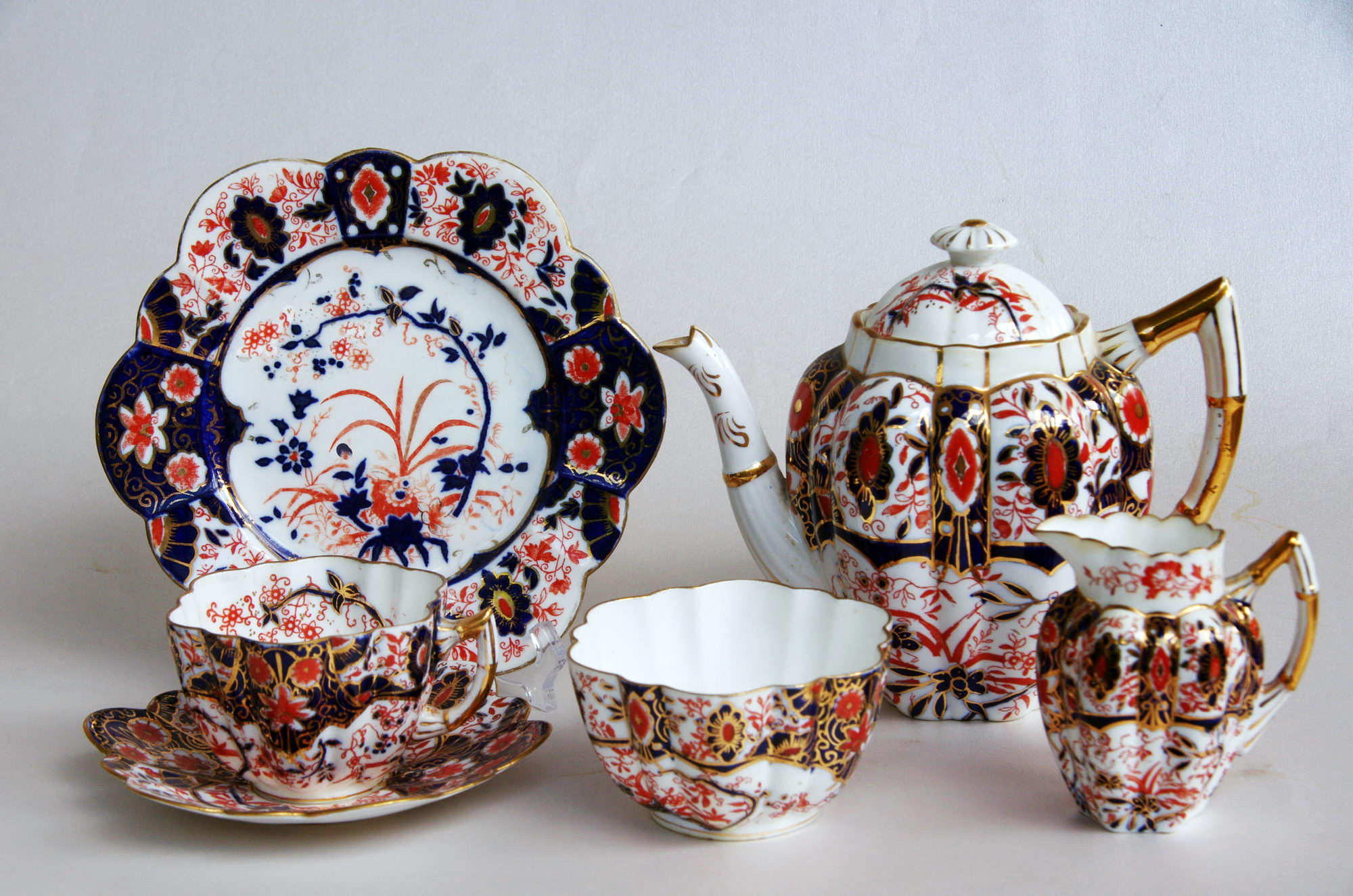
Wileman and Shelley Japan Ware
Japan Ware Sets & Unusual Pieces
Pictorial Table of Japan Ware Patterns
Wileman and Shelley Japan Ware

Japanese Imari
From 1882-1935 Wileman and Shelley made beautifully ornate patterns in the Japanese style. For the most part they were characterized by the use of a blue underglaze, together with a reddish-orange decoration overlaid with a brilliant gold. In common parlance these patterns are often called Imari, which is the port in Japan that exported the porcelain wares made in nearby Arita. True Imari is exactly that: Japanese wares exported from Imari. Japanese Imari features designs found in their culture: “exotic landscapes, gnarled trees, long-winged birds such as cranes, …courtesans in exquisitely detailed kimonos”, and flowers such as chrysanthemums, peonies, water lilies and poppies. Besides deep cobalt blue or black, reddish-orange, and gold, other colors such as soft greens, yellow and pink are sometimes present on Japanese Imari.
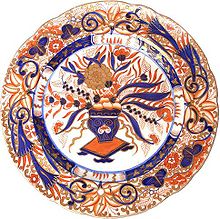
Royal Crown Derby
Beginning in the late 17th century the Dutch East India Company imported Japanese Imari to Europe. Japan was closed to all other westerners which caused demand for these items to escalate. Once Germany and England unlocked the secret of making fine porcelain in the early 18th century, they started imitating the style of the Japanese wares. Several English pottery makers such as Spode, Coalport and Derby (now called Royal Crown Derby) and Meissen in Germany made many so-called Imari patterns. They tended to use blue, red, and gold almost exclusively. The beauty and intricacy of these imitations sometimes surpassed the original Imari from Japan.
In 1853 US Navy Commodore Matthew Perry sailed into Tokyo Bay and ultimately obtained a treaty between the United States and Japan which opened trade between the two countries. Soon treaties were signed with other countries including Britain, and Japanese Imari became readily available. The opening of Japan to western trade caused an explosion of demand for Japanese art, porcelain, textiles, furniture and decorative objects for the home. This movement came to be known as Japonism.
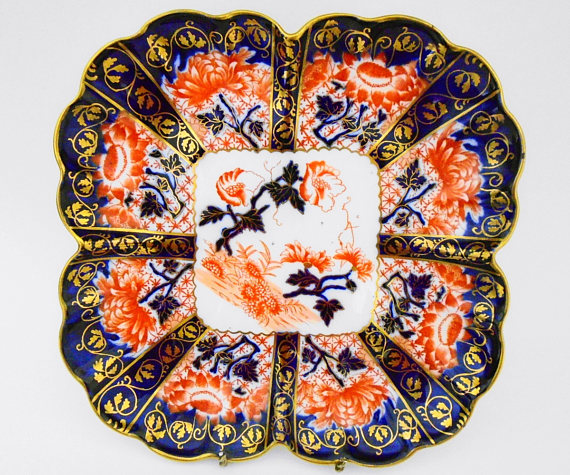
Wileman Pattern 6888
In 1882 Wileman & Company tried its hand at making Japan styled wares. We have chosen to use the name Japan ware rather than Imari because Wileman itself called the patterns “Japan”, and because technically the term Imari refers to wares coming from the Japanese port of Imari, not the imitations. Wileman and Shelley produced 167 pattern numbers in the Japan style. As one looks at the Table of Wileman and Shelley Japan Patterns, one will note that the same design may appear more than once. That is because Wileman often used a separate pattern number for a different shape of the same design. While there may have been 167 pattern numbers used, there were far fewer unique designs. To date we have photos of 96 of the pattern numbers which represent 55 unique designs. Until we have pictures of all 167 pattern numbers, it’s difficult to say with certainty how many unique designs Wileman and Shelley produced.
To help understand Wileman and Shelley’s Japan ware, I have prepared a spreadsheet of all the patterns they made. I included a pattern if any of the following criteria were met:
- Wileman or Shelley called it "Japan"
- The pattern description states "as... [and then lists a number which Wileman or Shelley called Japan]"
- The motif and/or colors are very similar to another pattern which Wileman or Shelley call Japan
- The pattern is in the Japan style, e.g. gnarled trees, cranes, etc, or is like Kakiemon (see below), or
- An authority in the Shelley world referred to it as Japan ware or Imari.
Wileman and Shelley did make Japan ware patterns on earthenware, but I have not delved into that subject. Perhaps it will be the subject of a future study.
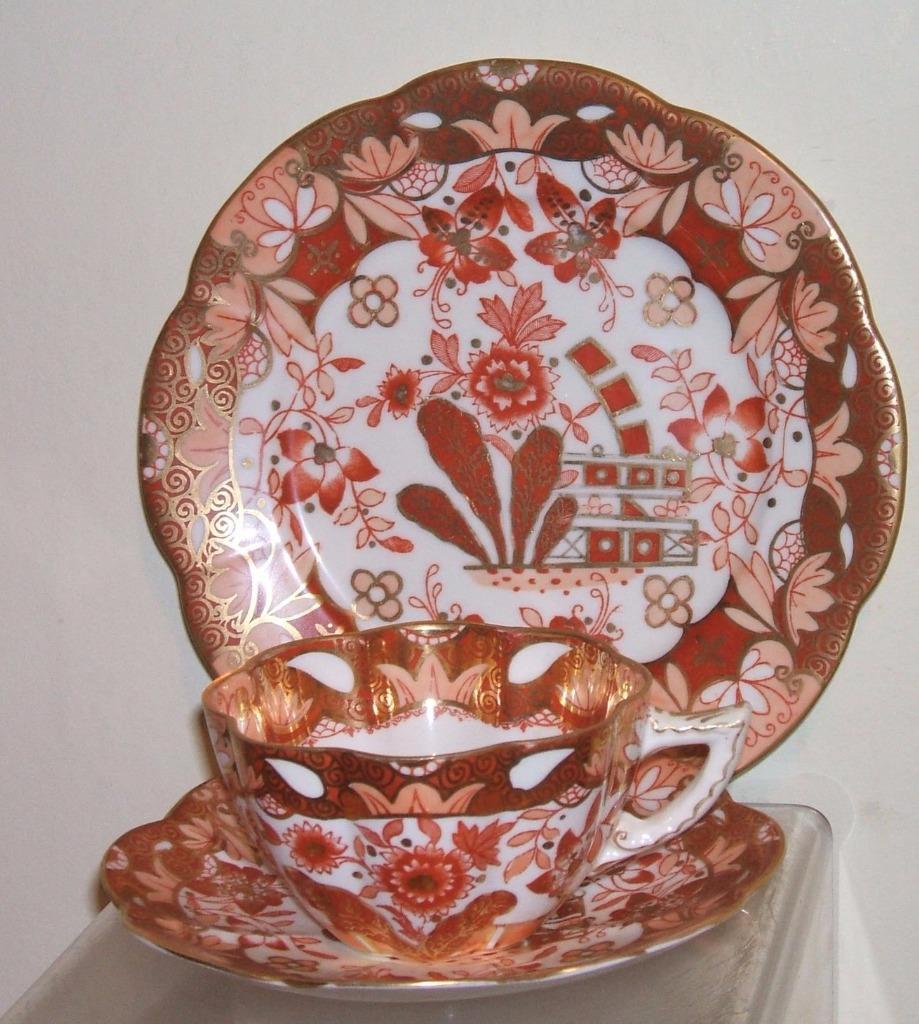
Wileman Pattern 4253
Typically Wileman and Shelley Japan ware features a dark blue or black underglaze, with red-orange decorations, and gold overlaid. However, Shelley sometimes made designs using red or green as the predominant color. In some patterns the addition of pink, light blue and green accompany the dark blue underglaze and gold. Flowers appear on all the designs. In Japanese culture, every flower is imbued with a secret meaning, not unlike the Victorian language of the flowers. This secret language in Japan is called “Hanakotoba”. Wileman and Shelley used flowers which have great significance in Japan: the peony as a symbol of good fortune, bravery and honor; the rose stands for romantic love; the red poppy symbolizes fun-loving; daisy for faithfulness; water lily signifies divine birth and purity; lotus flower for passion, compassion and love; chrysanthemum is the imperial flower and represents longevity.
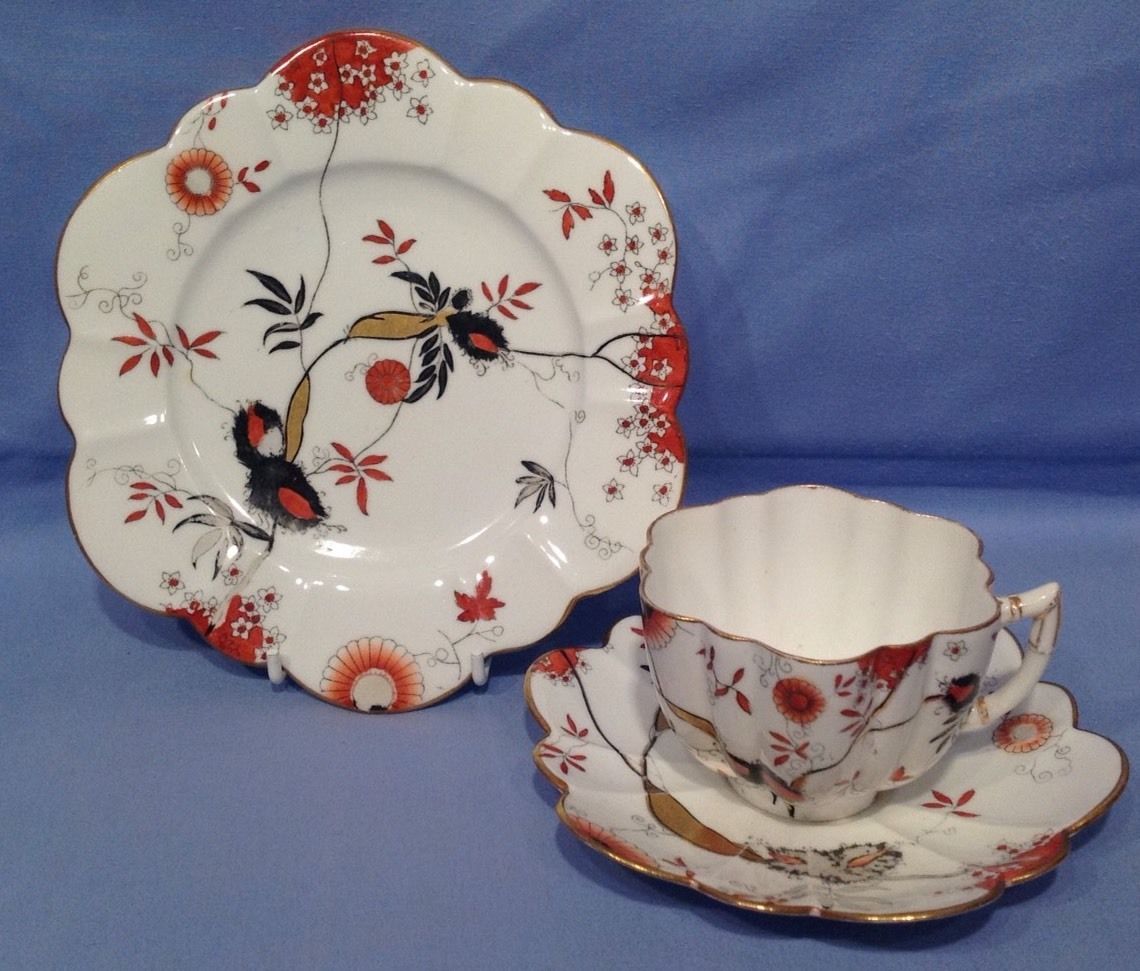
Wileman 6076, Bird's Nest
Another style of Japanese porcelain which originated in Arita and was exported from Imari is called Kakiemon, named for the famous 17th century Japanese potter who perfected the technique. Its characteristics include asymmetric well-balanced designs, sparse application to show off the white body of the porcelain, and themes from nature such as animals, trees and flowers. It is still being produced today by descendants of the original family and has been imitated the world over. Wileman examples abound such as 6076, Bird’s Nest, shown at left.
NOTE: If anyone has a photo of a Wileman or Shelley Japan ware pattern that does not appear in the Table of Wileman and Shelley Japan Ware Patterns (below), please forward a photo of the ware and the backstamp to [email protected]. We would be happy to add it to the Table to further our study.
Japan Ware Sets & Unusual Pieces
Photos of entire sets of Japan ware are especially lovely; a slidehow is presented here to whet the appetite of serious collectors of Wileman and Shelley Japan ware.
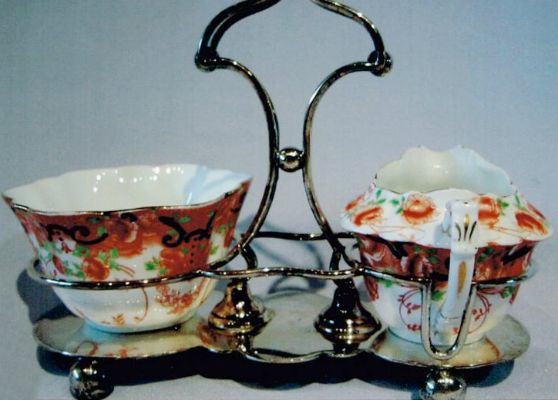 10395 Creamer & Sugar on Empire Shape
10395 Creamer & Sugar on Empire Shape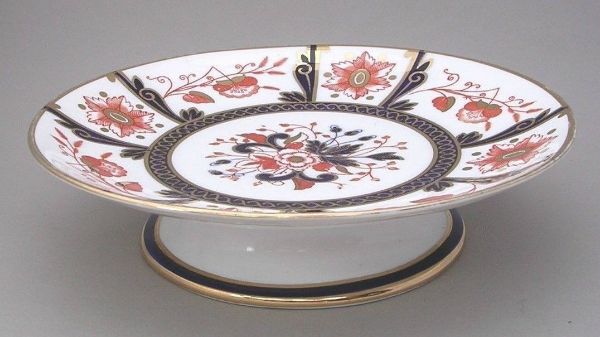 3476 Low Comport
3476 Low Comport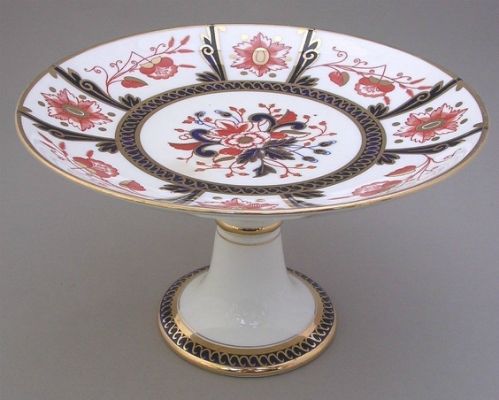 3476 Tall Comport
3476 Tall Comport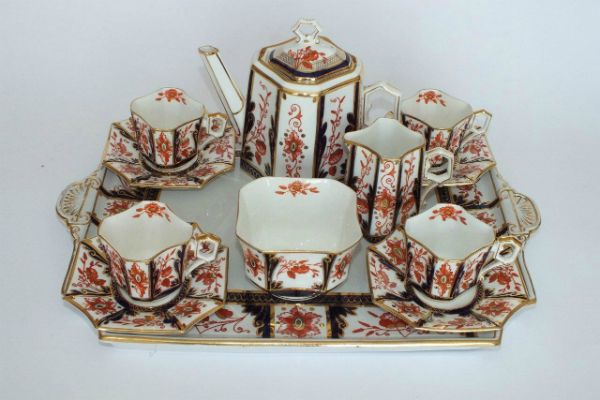 3476 Tea Set
3476 Tea Set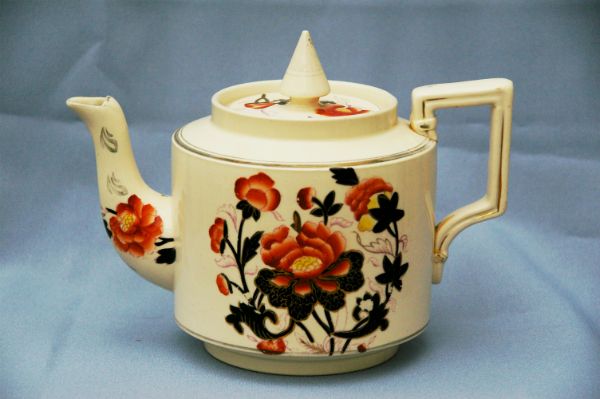 3532 Victoria Teapot
3532 Victoria Teapot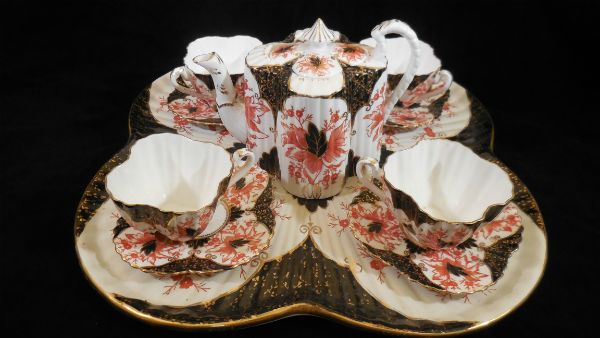 3725 Tea Set
3725 Tea Set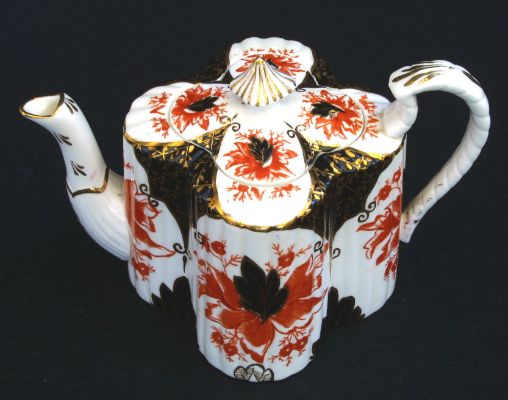 3725 Teapot
3725 Teapot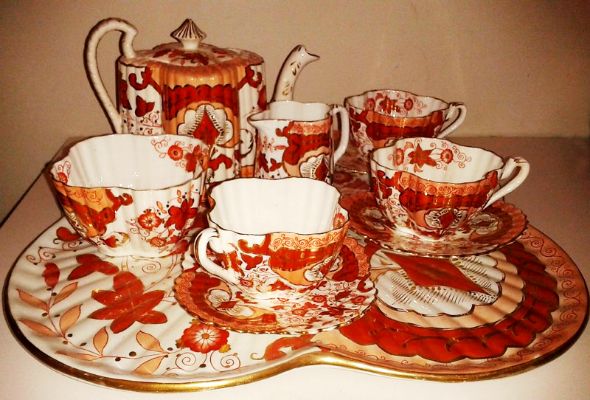 4024 Tea Set
4024 Tea Set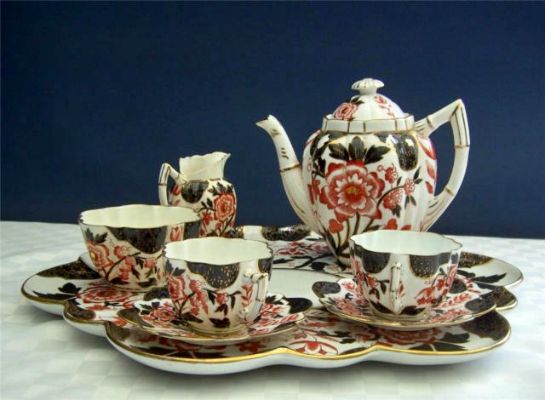 6030 Tea Set
6030 Tea Set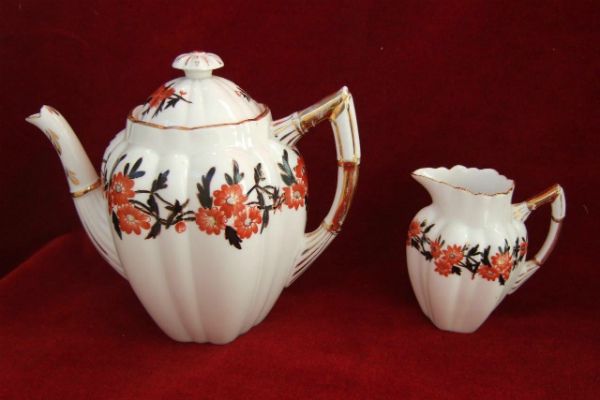 6031 Teapot & Creamer
6031 Teapot & Creamer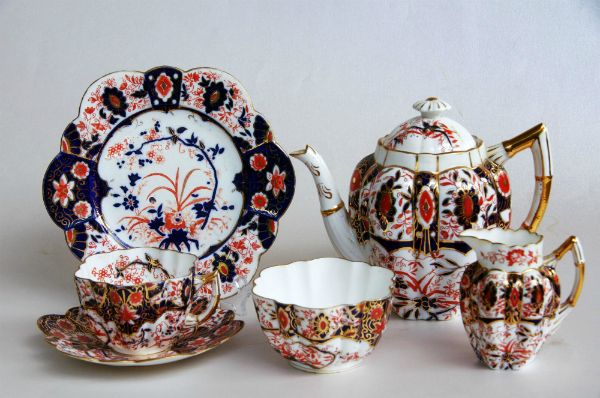 6075 Tea Set
6075 Tea Set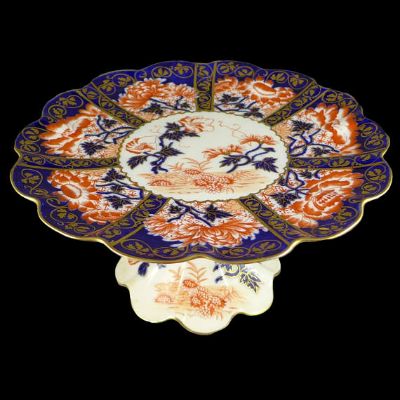 664 Comport
664 Comport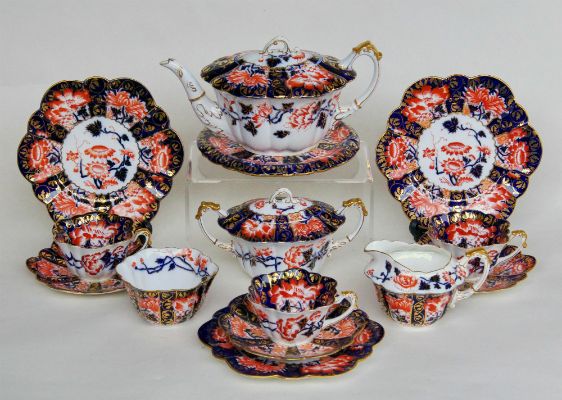 6888 Tea Set
6888 Tea Set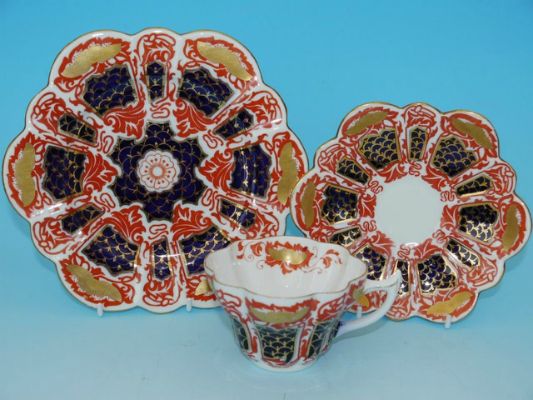 6998 Trio on Snowdrop Shape
6998 Trio on Snowdrop Shape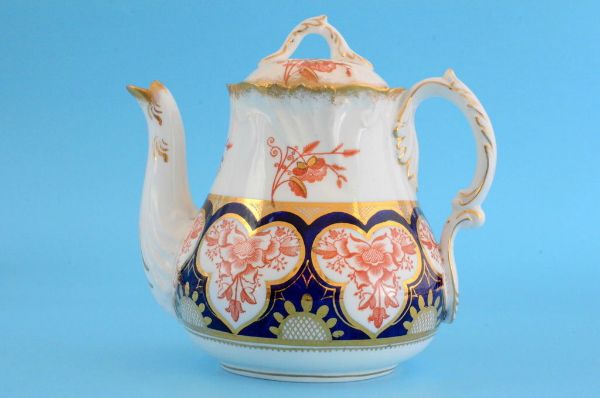 7019 Teapot on Foley Shape
7019 Teapot on Foley Shape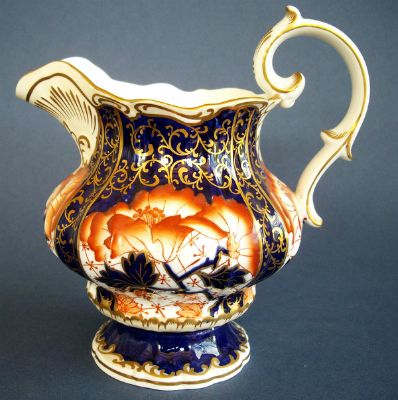 7318 Jug
7318 Jug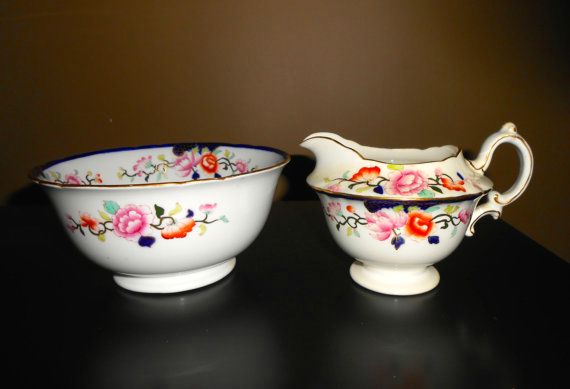 7824 Creamer and Sugar on Gainsborough Shape
7824 Creamer and Sugar on Gainsborough Shape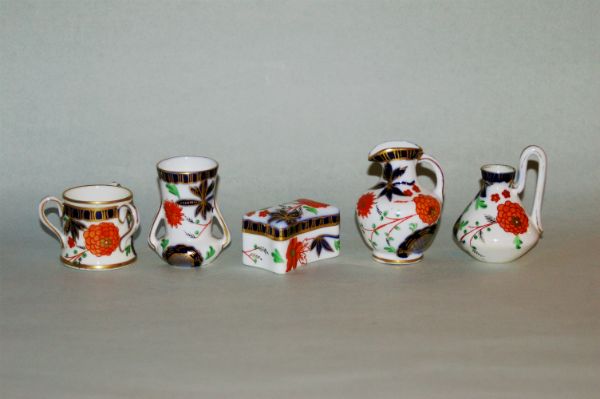 8524 Ashbourne Assortment
8524 Ashbourne Assortment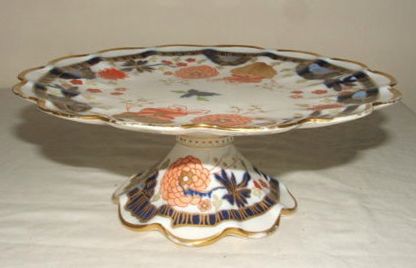 8524 Comport
8524 Comport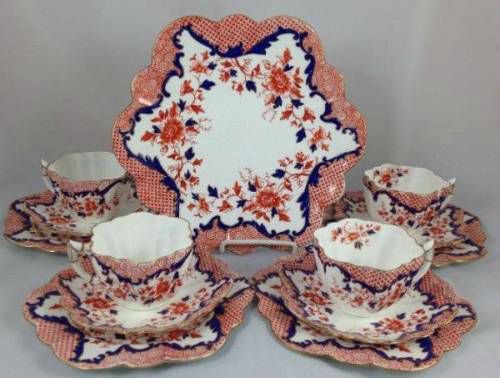 9119 Dessert Set
9119 Dessert Set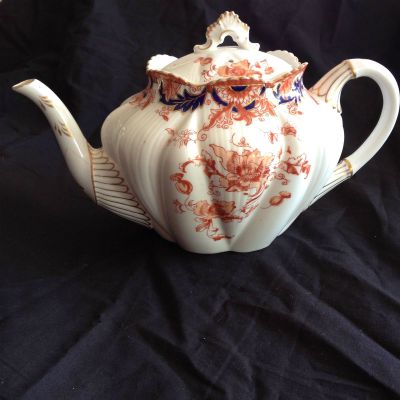 9127 Sunflower and Leaf Teapot on Dainty Shape
9127 Sunflower and Leaf Teapot on Dainty Shape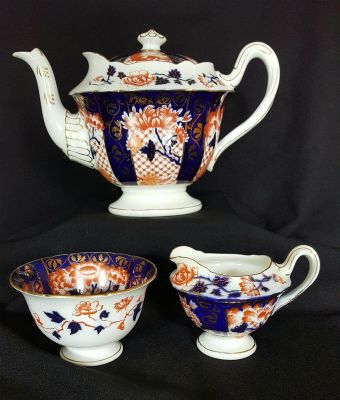 9764 Teapot Creamer & Sugar on Gainsborough Shape
9764 Teapot Creamer & Sugar on Gainsborough Shape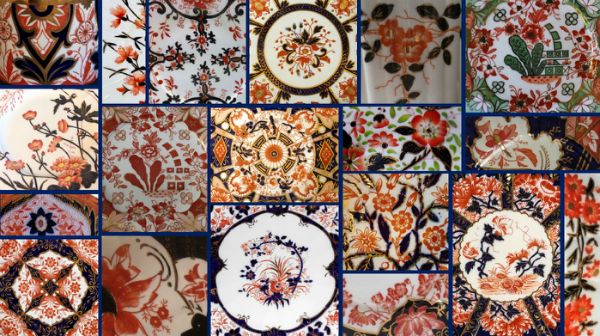 Patchwork Quilt
Patchwork Quilt
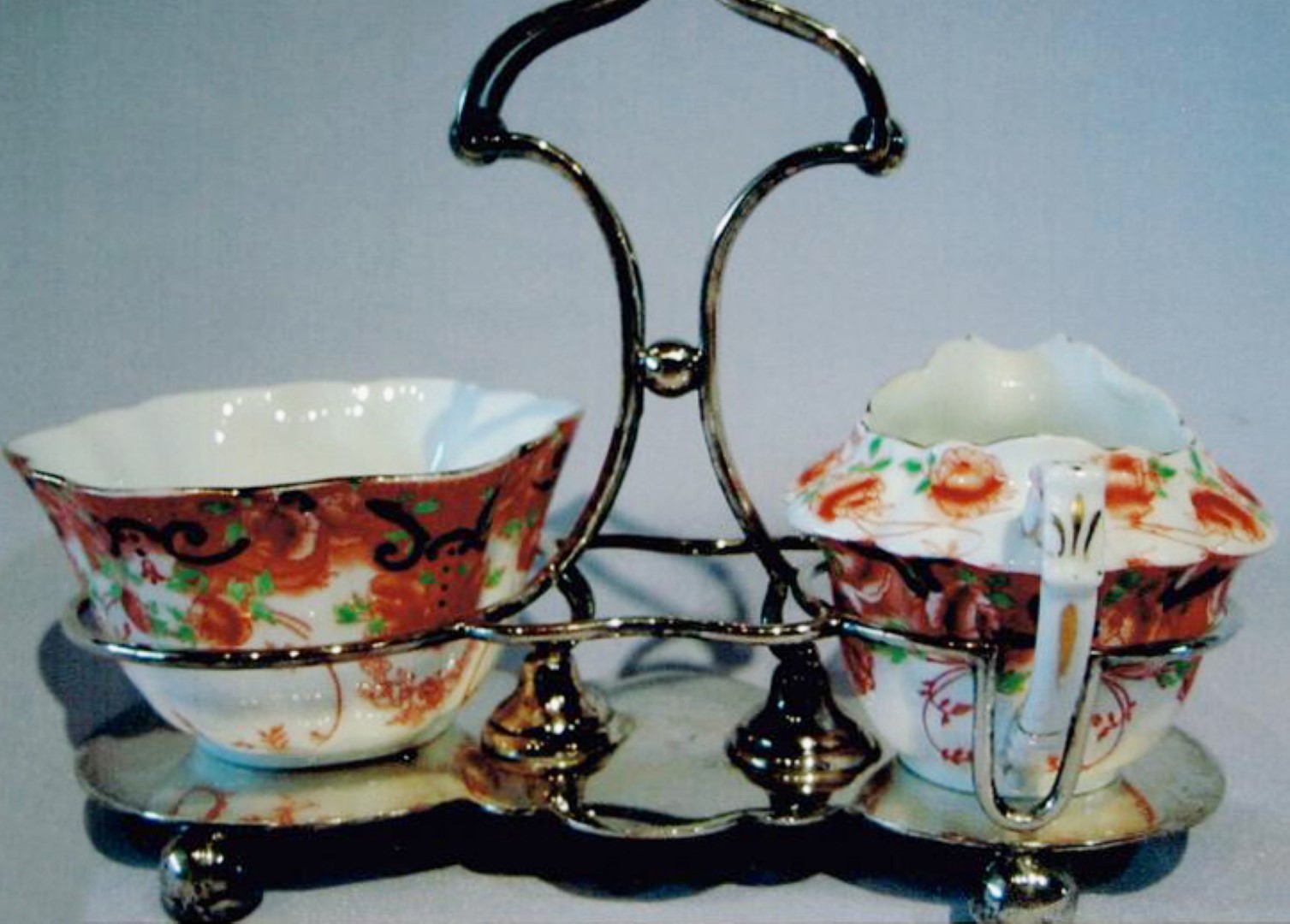
Pictorial Table of Japan Ware Patterns
To view all the pictures in the Table, please click on the picture below:
Numerical Listing of Japan Ware Patterns
This Appendix lists patterns in numerical order. The dates of introduction are also listed. Because Wileman used two separate patterns books during the period 1890-1913, patterns with a lower number may actually have been produced later than patterns with a higher number.
Acknowledgments and References
Acknowledgments and an extensive table of references may be accessed here.

